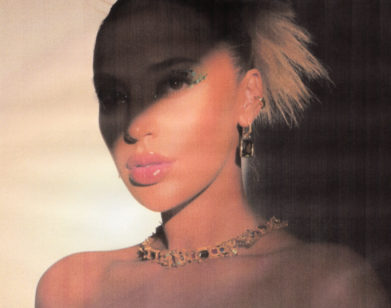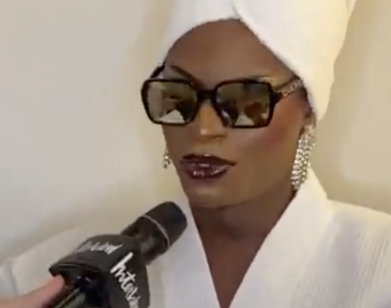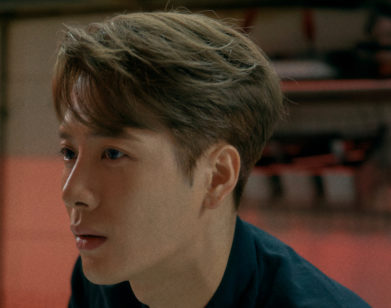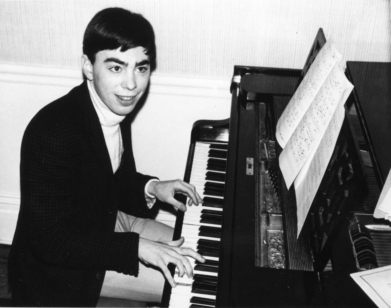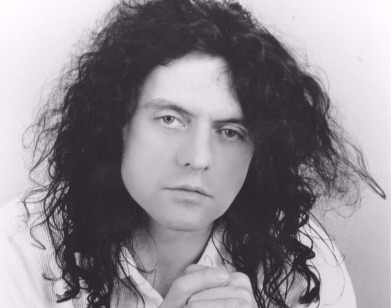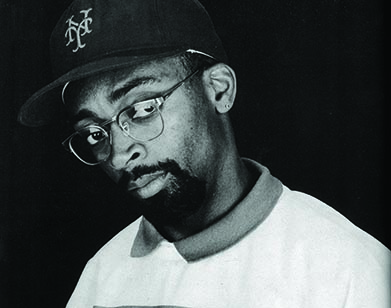Q & Andy: Udo Kier
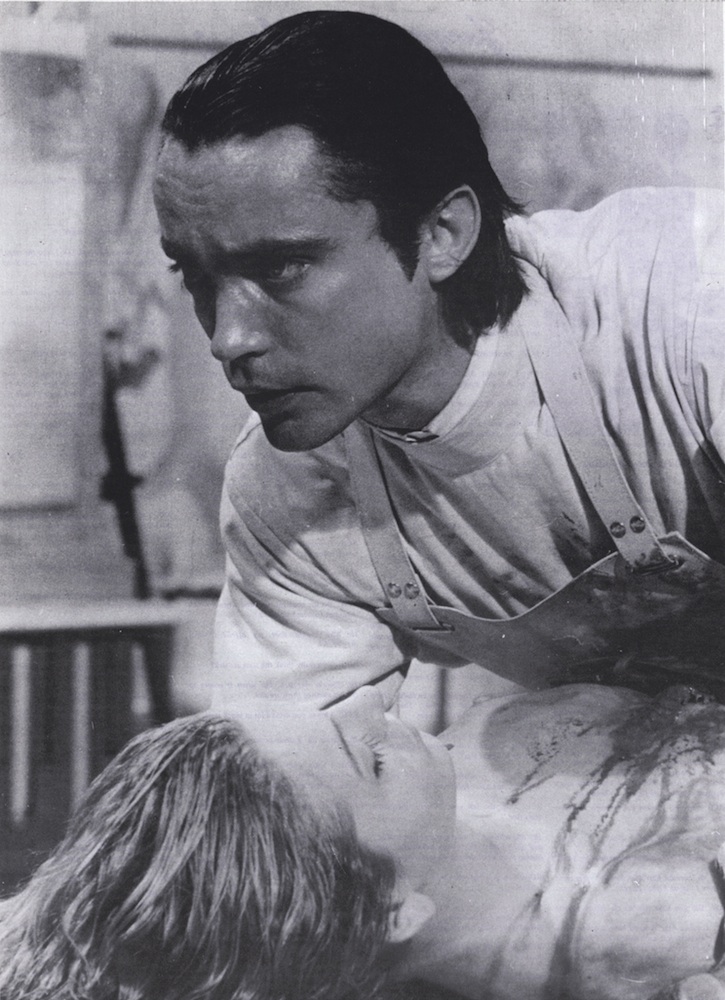
ABOVE: UDO KIER IN FLESH FOR FRANKENSTEIN, 1973
“I’ve made over 220 films,” says German actor Udo Kier. “Of these 220 films, 100 films are not good, 50 are okay, and 50 are very good,” he continues. Now 70 and based in Los Angeles, Udo Kier is the ultimate cult film actor of his generation. He’s played pimps and johns, Dracula and Frankenstein, and a lot of villains (his light-blue eyes are very arresting). He’s worked with Dario Argento, Guy Maddin, Andy Warhol, Rainer Werner Fassbinder, Werner Herzog, and Wim Wenders, and has appeared in every Lars von Trier film since 1987’s Epidemic. When Roman Polanski “said something nice” about Kier in Interview’s November 1973 issue, Warhol sent him a copy with every page signed.
Last week, Arteholic, Kier’s art documentary featuring a few of his famous friends, made its U.S. debut at the Palm Springs Film Festival. Next month, Kier will received the Special Teddy Award at the Berlin Film Festival. Here, Kier answers some of Warhol’s favorite questions.
ANDY WARHOL: Where were you born?
UDO KIER: I was born in Cologne in Germany, October 14th, 1944—the end of the war.
WARHOL: What did you have for breakfast?
KIER: Today—of course I have every day something different—I had pancakes with blueberries and some cream on top.
WARHOL: How were you discovered?
KIER: I got discovered in London. I left Germany for London to learn English, and I was discovered for a movie called Road to Saint Tropez (1966), which was a short film. I had no knowledge about moviemaking and it was amazing. Vogue magazine wrote a “new face of cinema” [article] and then I got right away offered a contract with William Morris. I said, “Okay, if I like it then I will continue working in this profession.” I had planned to be—because I didn’t like Germany at that time—a correspondent for a big company in Germany who traveled a lot in different countries. I wanted to meet people from different countries. My first [feature] film was a black-and-white film called Shameless (1968). I played the lead right away, playing a pimp in the underworld of Vienna. I was nervous about having the lead role, but not so nervous. Then I made my second film in color where I had one of the leads, and that became a cult film, which still today people see after all these years. It’s called Mark of the Devil (1970).
WARHOL: Did you go to acting school?
KIER: No, but I became a professor teaching theory of acting at a university. I’ve never been to acting school because I have different view of it: talent is something you cannot learn, no one can tell you how to have talent, you can only be taught technique.
WARHOL: Have you had any nutty fans who scared you?
KIER: Oh yes. I’ve had many. I was making a film in Greece and all of a sudden two women were standing there and said, “Hi, we’ve followed you.” And they’d left their husbands and were standing there in Greece. Or I have people throwing things over my fence around my house in Los Angeles. They throw a stone, which on it says “Udo’s Garden.” They throw a plate where it says, “Udo’s Dogs.” Things like that. [laughs] I have a lot of experience with, I wouldn’t call them crazy, but with very profound fans.
WARHOL: Do you dance at home?
KIER: Yeah. I dance when I’m alone. When I want to go out, I put some Adele or some music on and I just move to the music while I’m getting ready. I like Adele because the music is powerful. If I’m tired or I’m relaxing, I hear some classical music, but then I don’t dance. I have Maria Callas to relax. I have Donna Summer, because I met Donna Summer when she started her career.
WARHOL: Who would be your dream date?
KIER: I made a movie called Aretholic about art. They followed me to all the museums from the Centre Pompidou in Paris to Berlin to Copenhagen, and there was Lars [von Trier]. Lars told me that he wasn’t speaking at the moment, so for the film we were sitting next to each other reading a newspaper—he read his, and I read mine—and that was a wonderful date. I think when you have a dream date you don’t have to talk; you can just be together. If it really is the dream person, you know everything about that person before you meet the person. [But] I really do like Meryl Streep because she’s so professional and gets herself so much into the role, so we can say Meryl Streep.
WARHOL: How do you keep your good looks?
KIER: I never think about it. Whenever I see myself on the cover of magazines I think, “I’m okay,” but I don’t do anything for it. I look only in the mirror when I shave, because I shave wet so I have to look to not start bleeding. I don’t own a comb. I don’t own a brush. I take a shower and organize my hair with my hands. I don’t put cream on. The older you get—now I’m 70—you care about it less and less. You concentrate on more important things.
WARHOL: Who was the nicest person you worked for? What did they do that was so nice?
KIER: The nicest person was a French actor Jean Marais. He was the friend of Jean Cocteau. When I started in the business, he was the biggest star ever in France. I was supposed to make a film, and I was working with him, [but] the dates were going not so good. I was not in a good mood and he, the biggest star ever from France, asked why I was not in a good mood. I told him that I was losing a film, and he went to the office of the production and said, “Look, I have my career behind me. This boy has his career in front of him. I want you to change the plan and I will work and he will go to Austria to do his film.” In all my career years, I always find out that the best actors are the nicest people.
WARHOL: Is there anything you regret not doing?
KIER: Yes and no. I never did climb Mount Everest. I like mountains; I like snow. I never dived very deep. But I don’t regret it. From a young man up ‘til now I always did what I like to do: I chose films I want to do; I collect modern furniture, so I buy what I want to buy; I have an art collection—it’s basically all gifts from Robert Mapplethorpe or Andy Warhol or Robert Longo. I don’t regret.
WARHOL: What do you think of American kids?
KIER: I think it is a technology generation of games and Internet. It’s amazing what young kids know about all this technology, which I don’t know.
WARHOL: What do you think about love?
KIER: Next to peace, it is maybe the most important word. If everybody would love each other, there would be no war. It doesn’t have to be a man loves a woman. It can also be a dog. I love nature. I have a ranch and when I sit there and see a little lizard and birds, I really love what I see and I’m love with nature.
WARHOL: How did you end up in Hollywood?
KIER: I made American films like Andy Warhol’s [Blood for] Dracula (1973) and [Flesh for] Frankenstein (1974). Then I was in Berlin at the Festival and a young director came to me, which was Gus Van Sant. He said, “I’m going make a movie [My Own Private Idaho, 1991] with two young actors, River Phoenix and Keanu Reeves, and I would like to offer you one of the parts in the movie.” I thought, “Well, at a Festival it’s a lot of talking.” But then we were corresponding—there wasn’t any Internet at that period—and got me to America. It was my first American film shot in America. I stayed with a girlfriend Anna. I had already packed my suitcase to go back home to Europe and she said, “Why don’t you stay here?” I said, “No.” [Then] during the evening and after a few glasses of wine, I said, “Actually, not a bad idea.” And that’s 25 years ago. I was very lucky that a lot of casting agents liked [My Own Private Idaho] very much because of Gus Van Sant, so I could see a lot of people. I did commercial films like Blade (1998), Armageddon (1998), End of Days (1999), but at the same time I always did work with Wim Wenders or Werner Herzog.
WARHOL: What’s your favorite film?
KIER: Sunset Blvd (1950).
WARHOL: When do you get nervous?
KIER: I get nervous when I’m sitting in an airplane at 10,000 feet and then the sign comes on: “Please fasten your seatbelt for turbulence.”
WARHOL: What are you reading right now?
KIER: Right now I’m reading all the trade papers and a program for the festival in Palm Springs.

